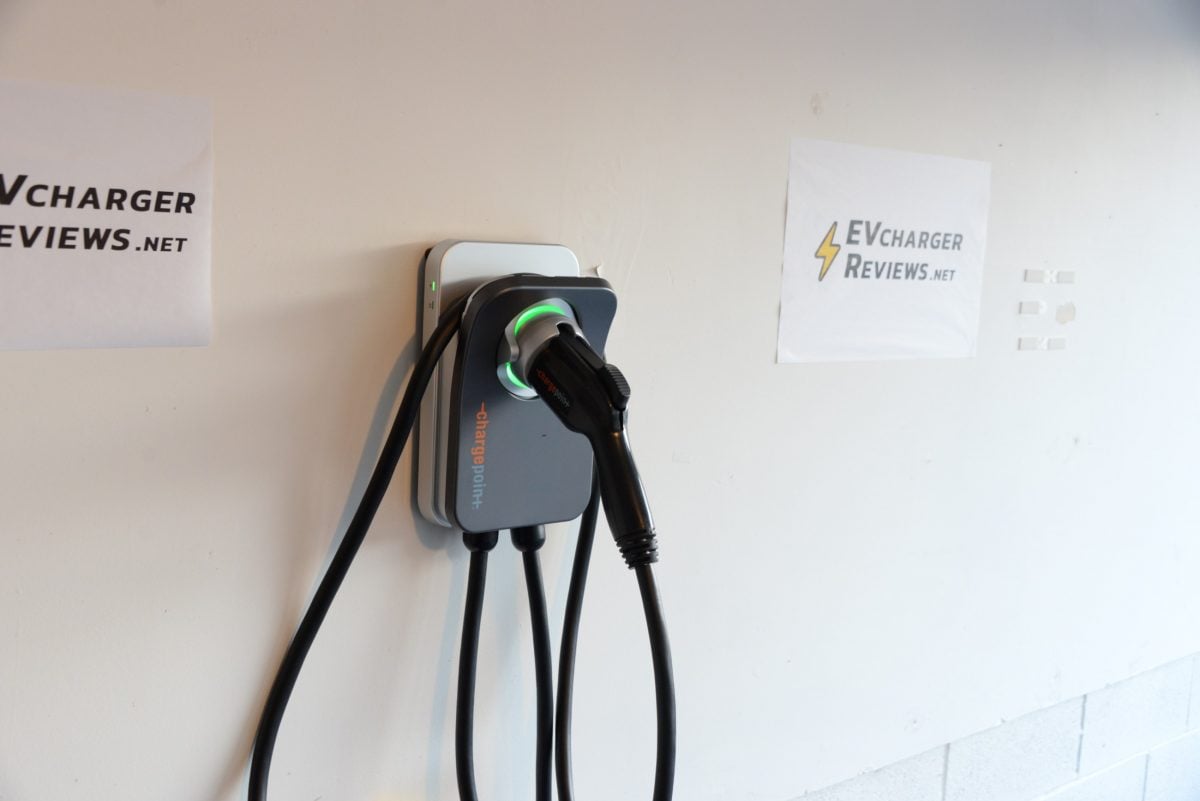The ChargePoint Home Flex is one of the most popular premium home EV charging stations on the market. Since its release, the Home Flex has been the benchmark other home charging stations are measured against. We’ve had our Home Flex for eight months, and it is the main charging station in our garage when we’re not reviewing other products. If this charging station is within your budget, you will not be disappointed. There are three SKUs to choose from when ordering: NEMA 14-50 wall plug, NEMA 6-50, or a hardwired unit. But note that the plug-in units can also be hardwired by an electrician.
March 2024 Update: ChargePoint now offers the Home Flex with either a J1772 or NACS (Tesla) connectors. This makes the Home Flex a viable and very strong alternative to Tesla’s Wall Connector product for drivers looking for an option with a NACS connector.
Our Rating: 4.8/5
This review was originally published in August 2023, and significantly updated in March 2024.
What we loved
- Premium material and construction
- 50 Amp power output
- Single app for home/away charging
- The unit stays relatively cool
What could be better
- The charging cord could be longer
- Can’t add more than one charger to an account
Packaging and Installation
The Home Flex arrives double-boxed from Amazon, and the packaging will protect the unit from even the roughest delivery journeys. Unboxing the Home Flex was a joy, as it should be for a more premium product.
Inside, you will find the unit shrink-wrapped for another layer of protection. This home charging station arrives with the charging cord disconnected, even though the NEMA 14-50 input cord was pre-connected. We are not sure if this measure was taken for more compact packaging, or for safety. Most other products arrive at a higher level of assembly.
However, connecting the charging cord to the unit only takes an additional 5-10 minutes of work. The front plastic cover is easily removed by unscrewing two small screws from the bottom. This reveals another black plastic access panel. That panel can be unscrewed using a flat-head screwdriver or even a coin.
The unit itself is mounted to a wall using three 1/4-inch by 2-inch screws that provide enough support for the charging station and the 23-foot-long cord wrapped around it. In total, we estimate the installation can be done in around 30 minutes if you already have access to a NEMA 14-50 (or 6-50) outlet. If you are going with a hardwired setup, consult with a licensed electrician.
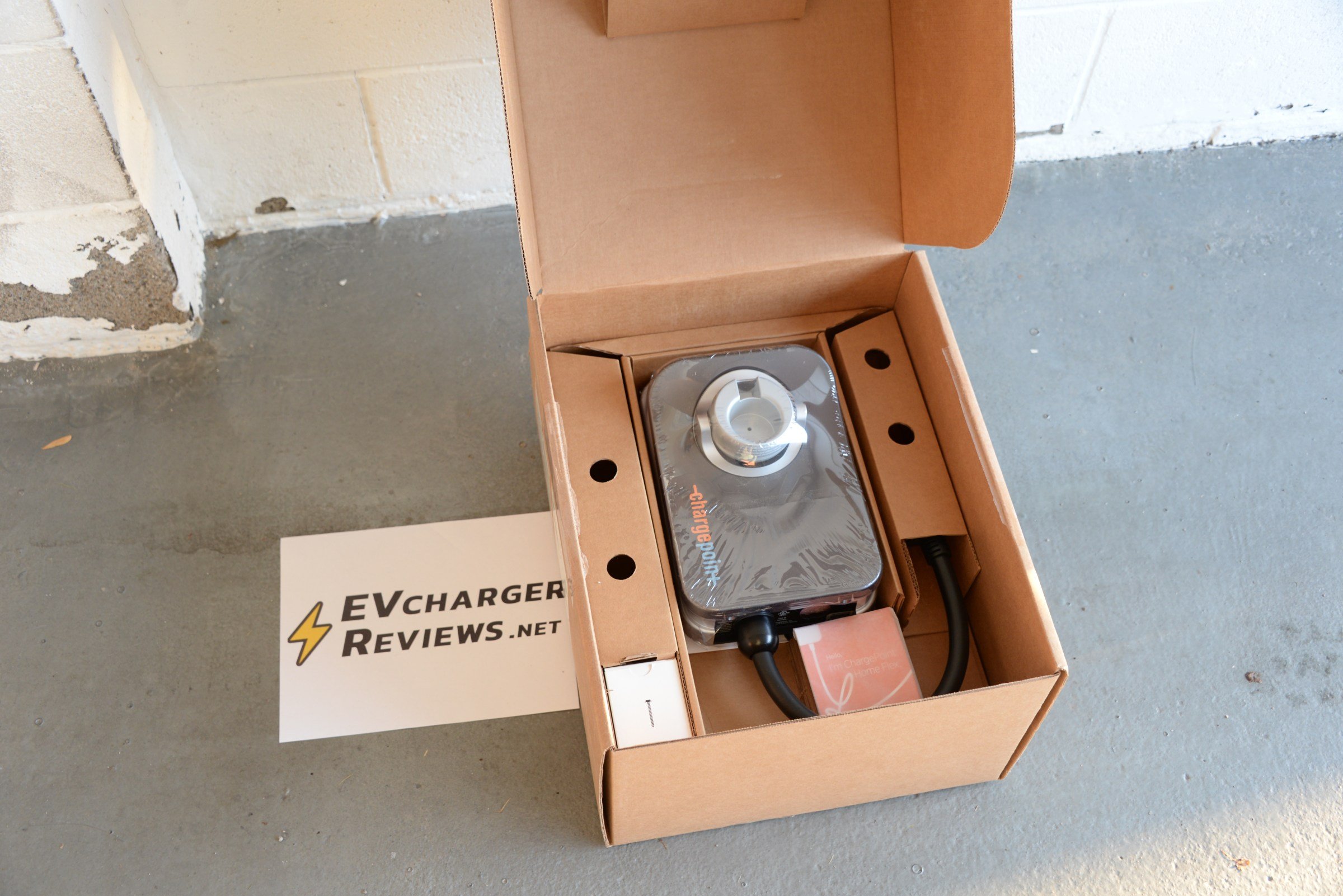
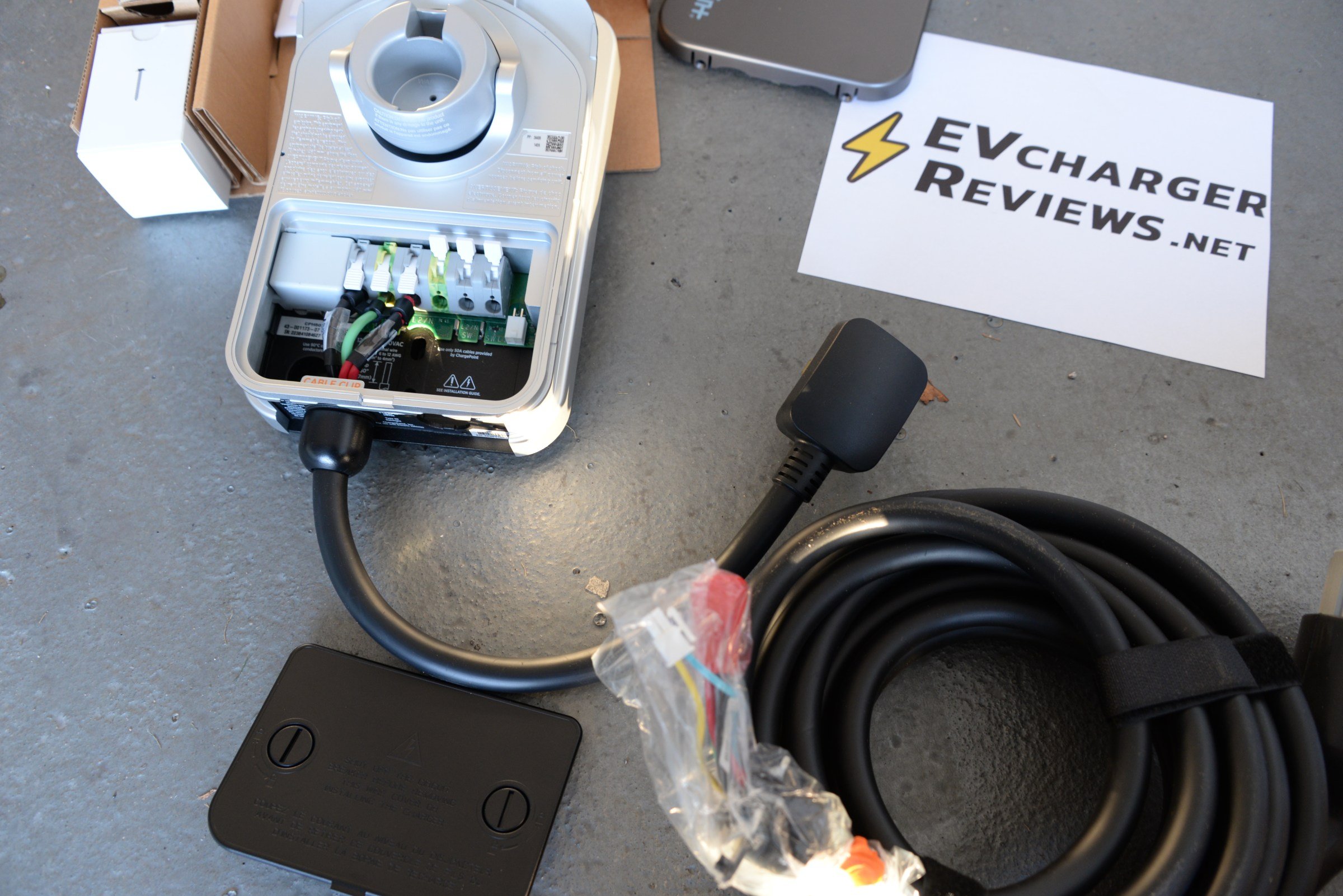
Hardware and Design
Why do we love the ChargePoint Home Flex so much? The thoughtfully designed hardware. Although the front of the unit is largely made from plastic materials, the back of the unit has something that resembles a metal heatsink to dissipate heat into the environment. We just don’t see this in lower-priced home charging stations.
Why is this important? When pulling 40+ amps from the grid, we observed many charging stations become very warm. Some even get concernedly hot. Not so with the Home Flex, it stays relatively cool even under full loads.
The heat trapped around a home charging station is not necessarily a safety concern, because these products need to meet stringent safety controls. The concern is more about the long-term longevity of the internal electronics, where a hotter operating unit may succumb to premature failure with daily use.
The enclosure is rated NEMA 3R weatherproof, meaning it is suitable for indoor and outdoor installations in most climates. Charging in extreme heat or cold should not be a problem, but avoid installing in locations susceptible to floods.
Our other favorite hardware feature of the Home Flex is the cord management system. The top edge of the unit protrudes away from the wall to make wrapping the excess cord length possible. This is very handy for when you’re not using the charging station, and you need the cord to get out of the way. The front of the unit has a swiveling J1772 plug that leans downward when docked, and faces upward to make holstering the J1772 connector very easy. As shown in the GIF below. This smart design prevents the J1772 connector from sticking out from the wall, making it easier to move your EV in and out of the parking spot.
The charging cord is the final hardware component that deserves recognition. More on that below.
Specification Summary
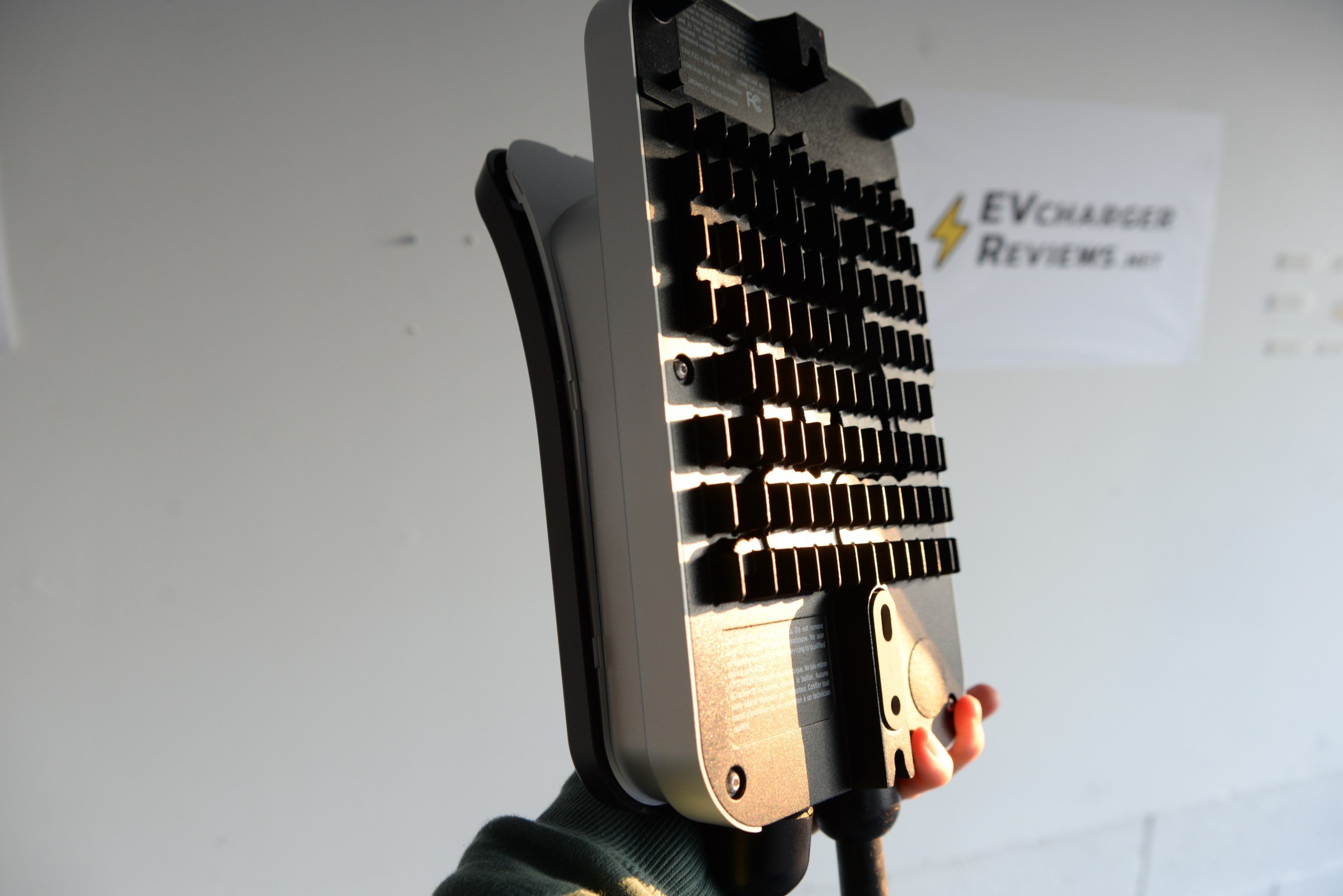
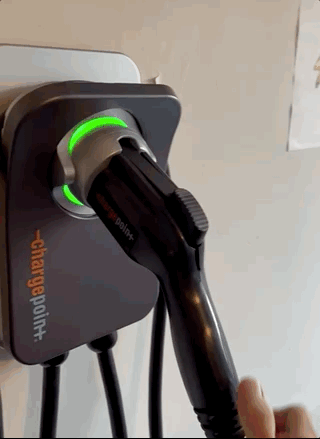
| Spec | ChargePoint Home Flex |
| Charging Level | Level 2 (240v) |
| Max Amps | 50 amps hardwired, 40 with NEMA 14-50/6-50 plugs |
| Lowest Amp Setting | 16 Amps |
| Cord Length | 23 feet |
| Charging Connector | J1772 or NACS |
| Wall Connector | NEMA 14-50, or NEMA 6-50 |
| Connectivity | Wi-Fi + App |
| Warranty | 3 years |
Charging Cord and J1772 Connector
The NEMA 14-50 (and 6-50) input cords are about a foot and a half in length. The ideal NEMA wall plug placement will be ~18 inches below. Also, note that the round pin of the NEMA 14-50 is on the part of the connector closest to the floor, so the ideal orientation of the plug is upside down.
The EV charging cord on the Home Flex is 23 feet from tip to plug. While it is not the longest cord available on the market, 23 feet is long enough to reach the charging port of any EV regardless of parking orientation. It should also be able to reach across a parking space to reach a second vehicle in a two-car garage.
What really sets the ChargePoint Home Flex apart from the competition is the quality of the charging cable. A good cable has enough conductive material so it doesn’t get too warm while charging the EV, while also having soft pliable rubber insulation. The Home Flex delivers in these respects because, unlike many competitors, the cord material stays relatively pliable in colder temperatures where cheap cords really suffer.
During the duration of our testing, we mainly used the Home Flex with a Tesla, and we had no problems connecting the charging station to the Tesla/J1772 adapter. Be aware though, that you will need to supply your own Tesla adapter to use the ChargePoint Home Flex (one comes with each Tesla car). We have also tested the charging station with a VW ID.4 and Kia EV6 and had zero compatibility issues.
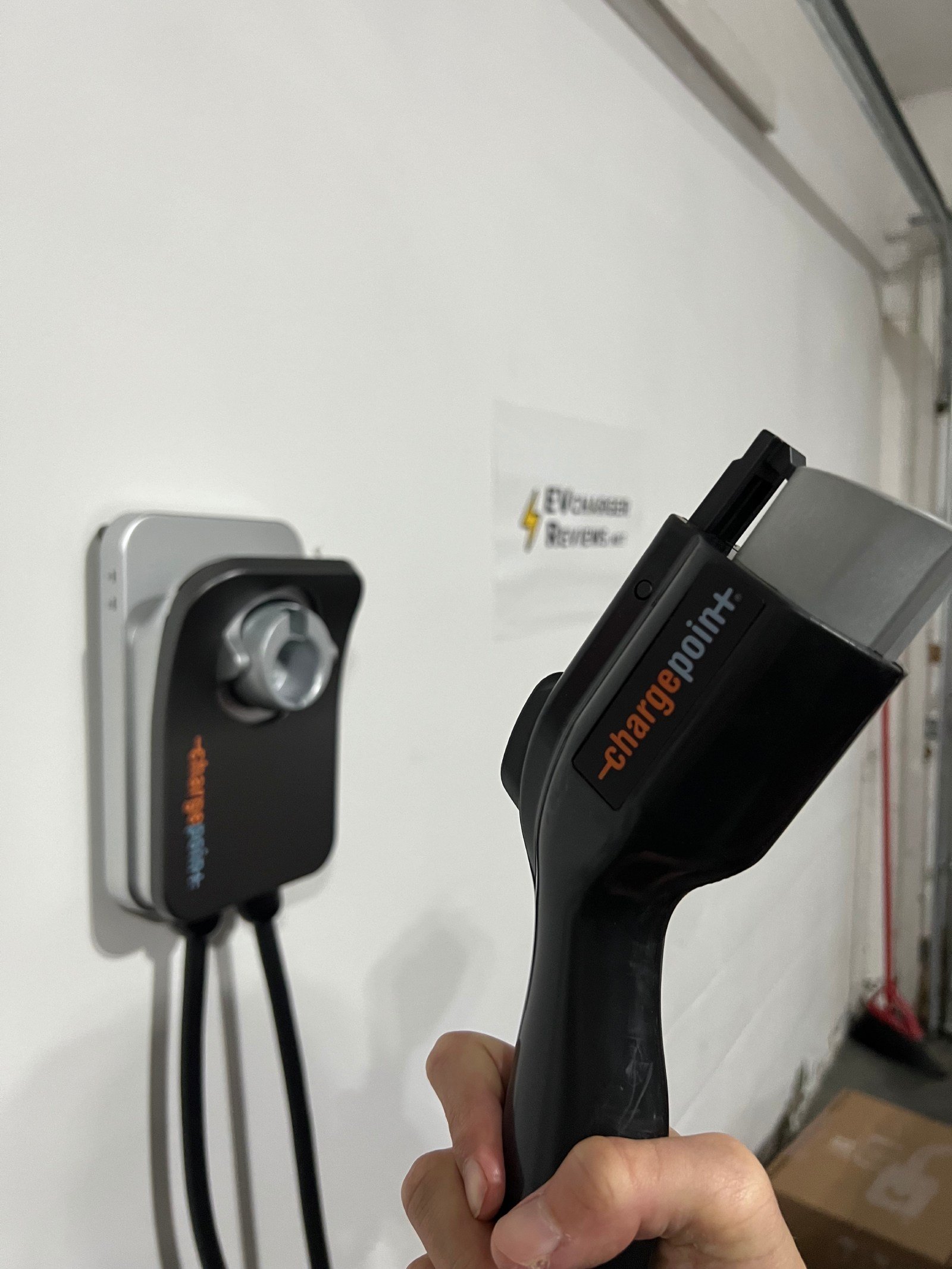
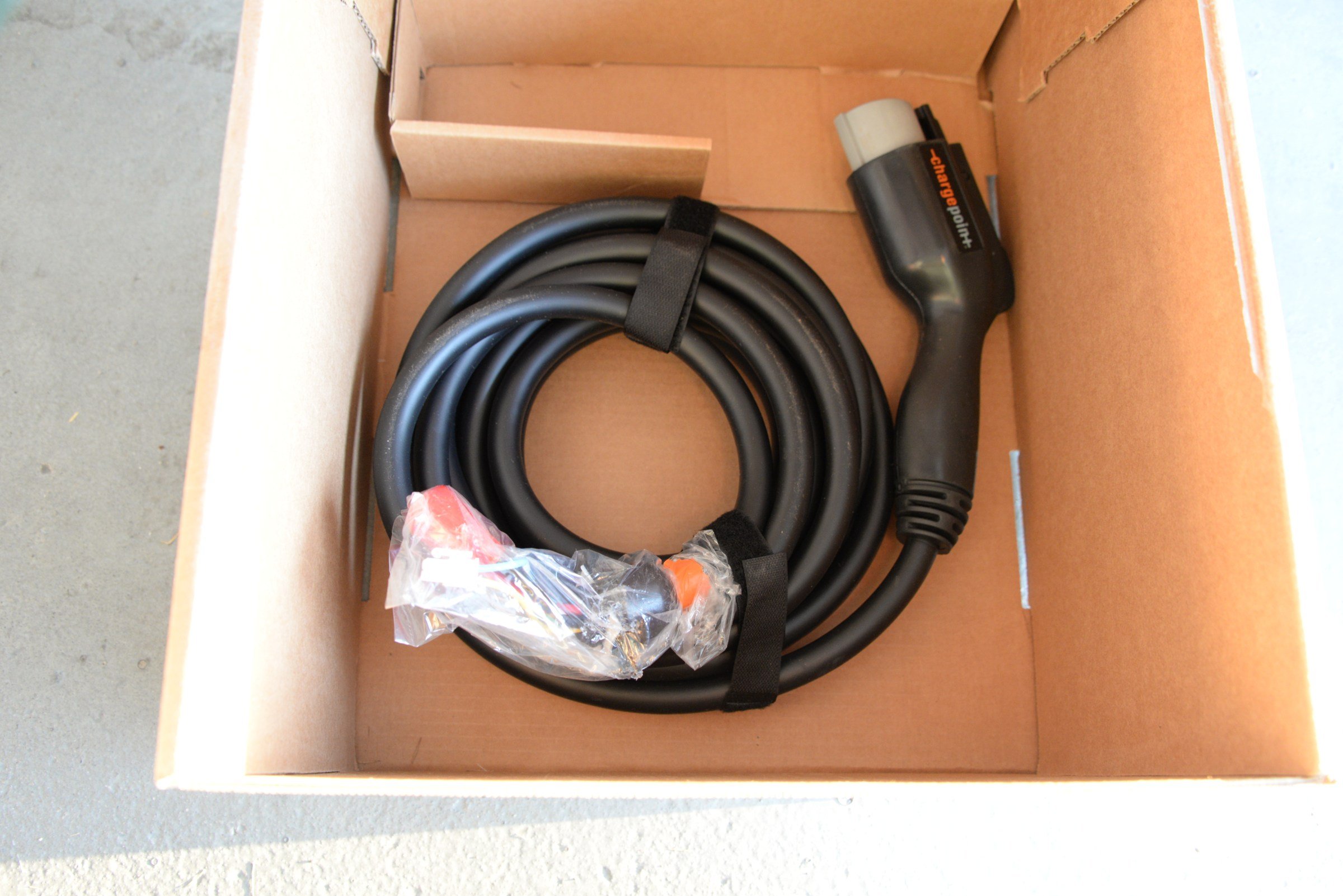
Connectivity and Software
The Home Flex includes Wi-Fi and Bluetooth connectivity, as expected from a premium home charging station. The same ChargePoint app that is used to access the ChargePoint public charging network is used to control the Home Flex unit. This is very convenient for drivers who frequent the public charging network. The home charger appears as a menu item in the same app.
The setup process prompts the user to connect to the Home Flex from their smartphone and run the ChargePoint app through a configuration process, where the Wi-Fi network information is programmed into the unit. The entire process only takes a few minutes and is easy to follow. However, this hardware is very much reliant on the app, and there is no way to start with this product without an app and an active internet connection. For the best experience, confirm that your parking location has decent Wi-Fi signal strength.
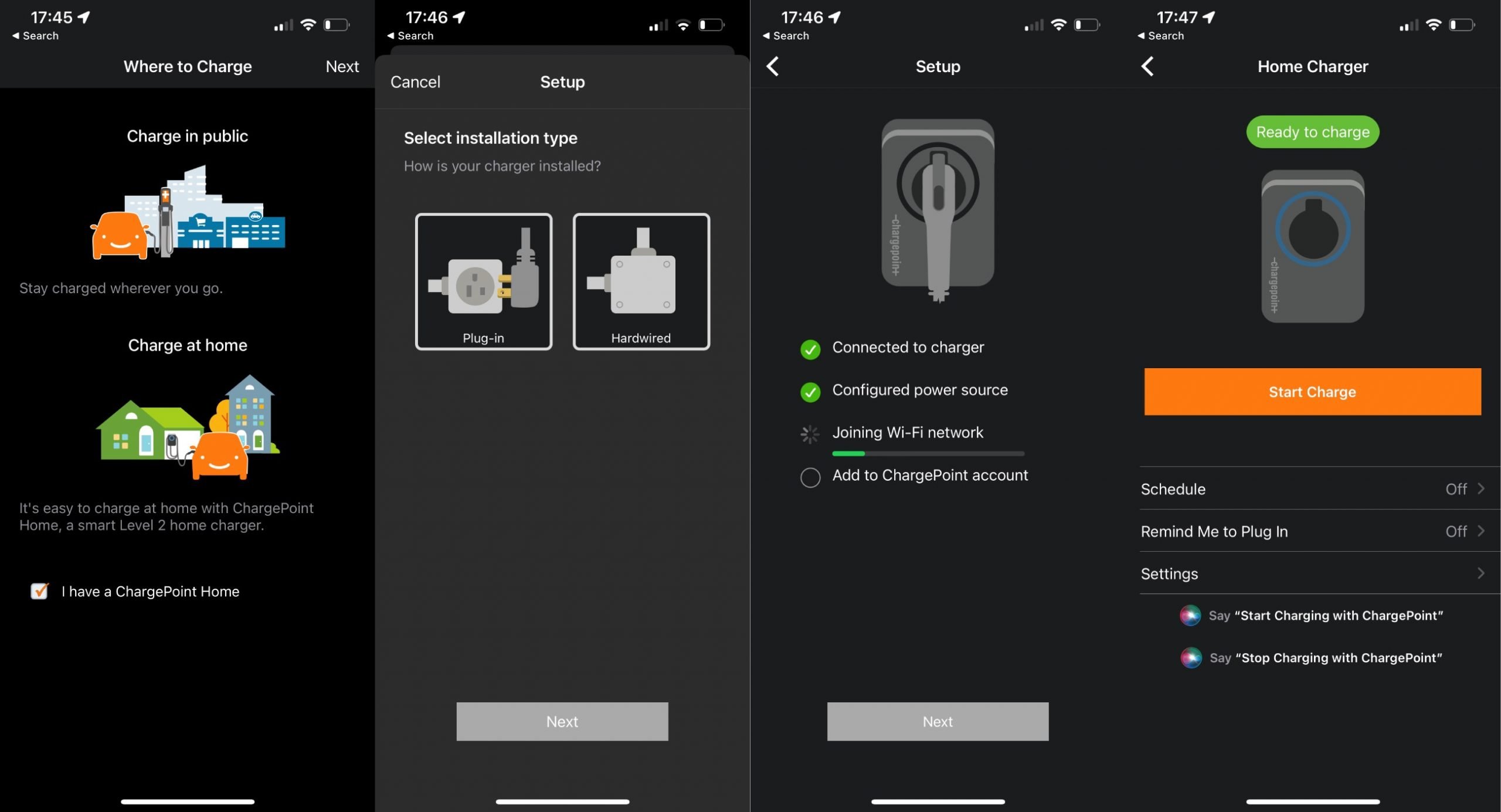
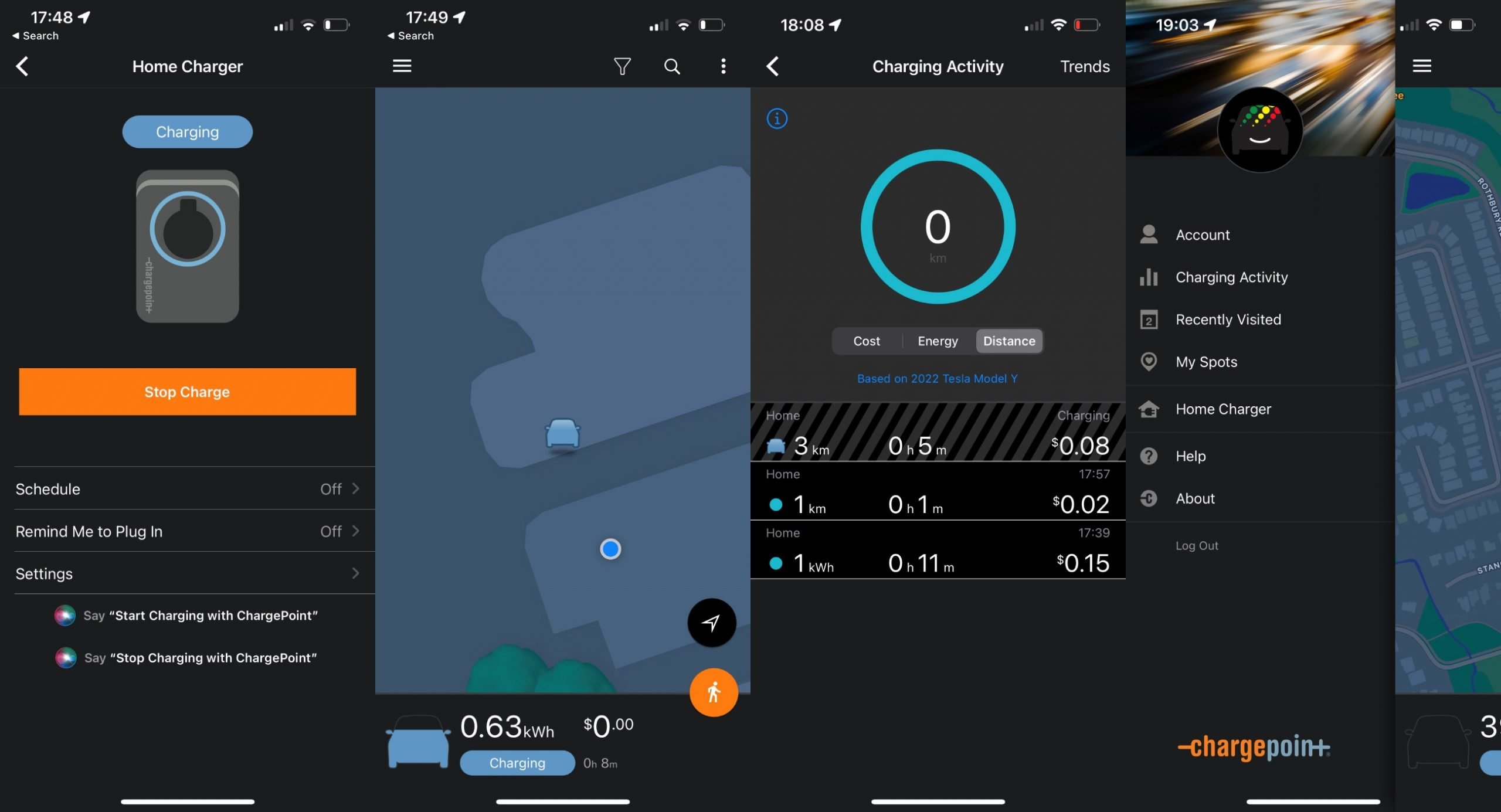
Upon registration and setup of the Home Flex, the software knew our location and was able to accurately identify our electric utility in the area. This was very impressive because ChargePoint can download accurate time of use (TOU) electricity rates and take that information into account when calculating your charging costs.
A possible deal breaker for some drivers is the inability to register more than one Home Flex unit under a single account. So households that plan on installing more than one EV charging station (or drivers with multiple homes) should take note. This may be improved with a future app software update, but it continues to be a possible problem as of August 2023. Similarly, the Home Flex charging station cannot be shared between two ChargePoint user accounts.
Scheduling
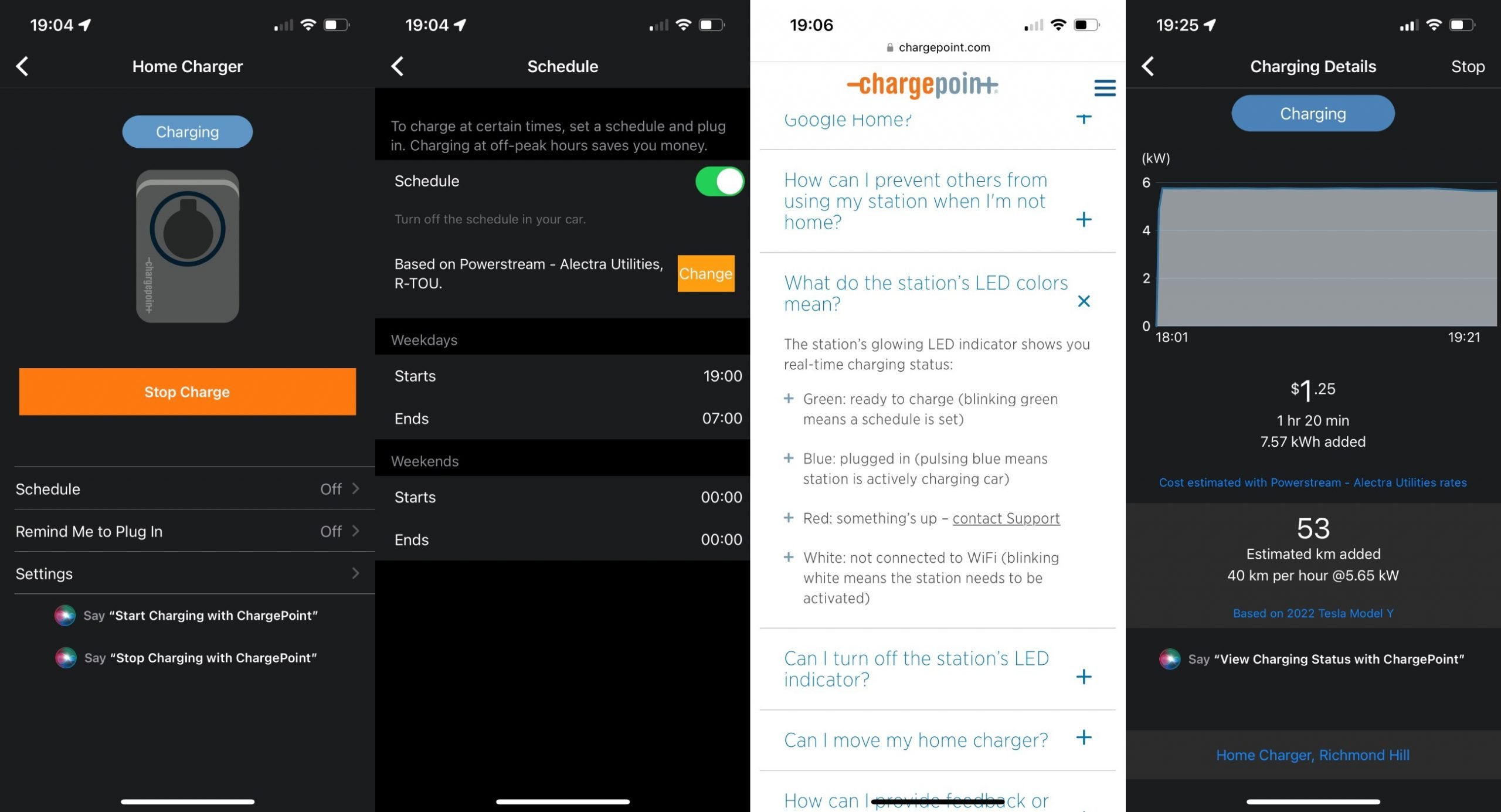
Scheduling works as promised during our testing. We also appreciate having separate scheduling options for weekdays and weekends, because energy costs often differ during times of the week. However, some competing units take scheduling flexibility a step further with daily schedules for drivers with inconsistent schedules.
To make scheduling work reliably, make sure that your EV does not have another schedule enabled in the infotainment system. So it begins charging as soon as the charging station starts the session.
Conclusion
The ChargePoint Home Flex is our premium home charger of choice. The product is well executed and does almost everything well. The hardware is backed by a 3-year warranty and should perform well over time. The 50 amp power of this product should be adequate for the power-hungry EVs of today, with headroom for your future vehicles. We only wish that some minor app issues could be resolved with software updates. Users who need to install more than one Level 2 charging station may be served with other options for now.
Shopping Options
Full Review Gallery
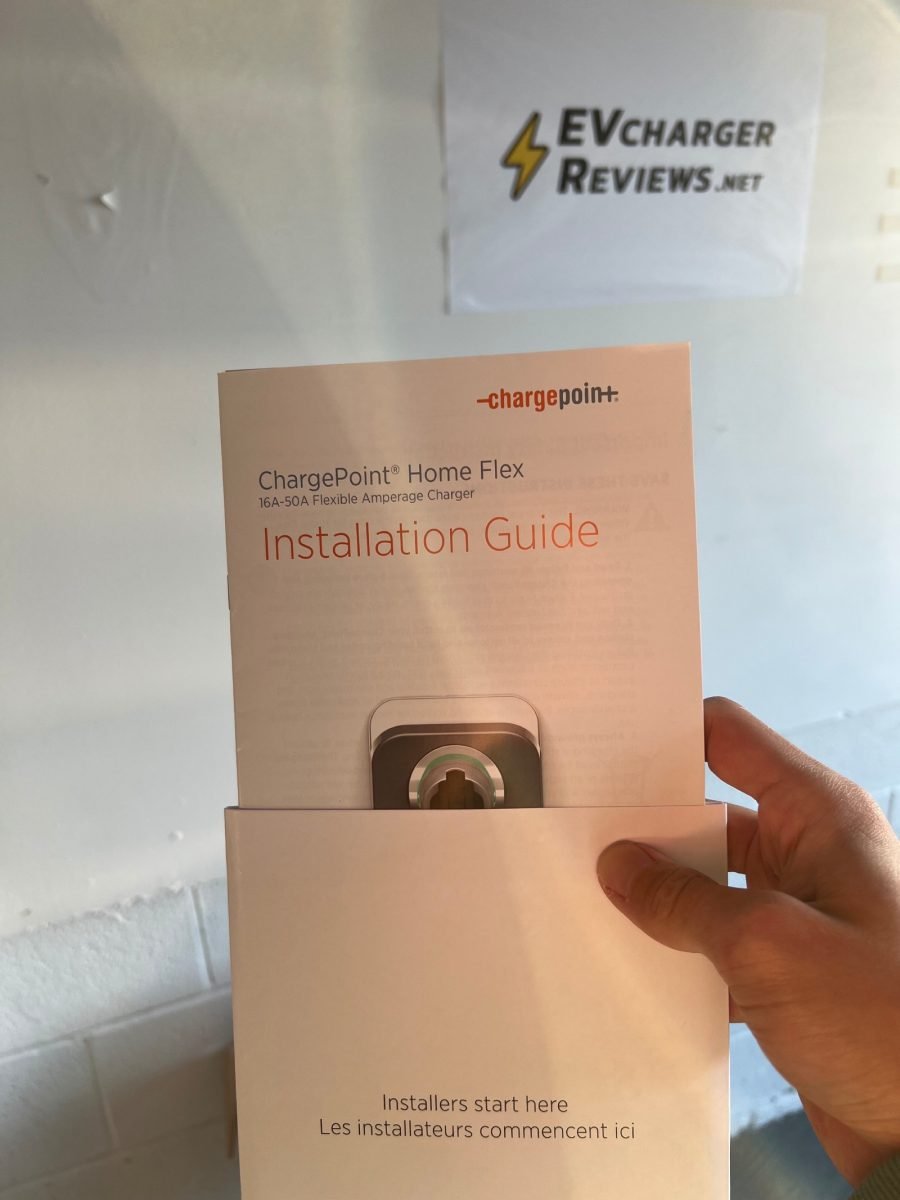
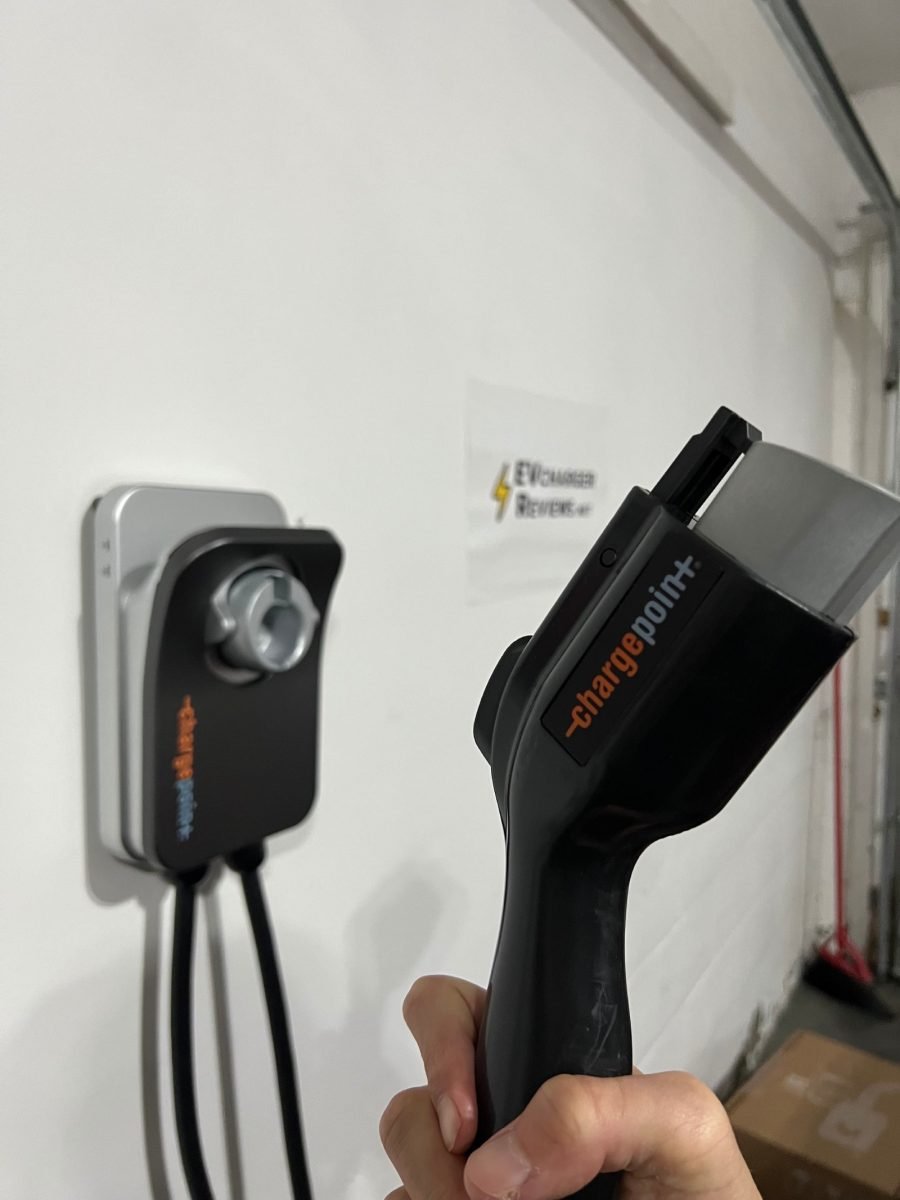
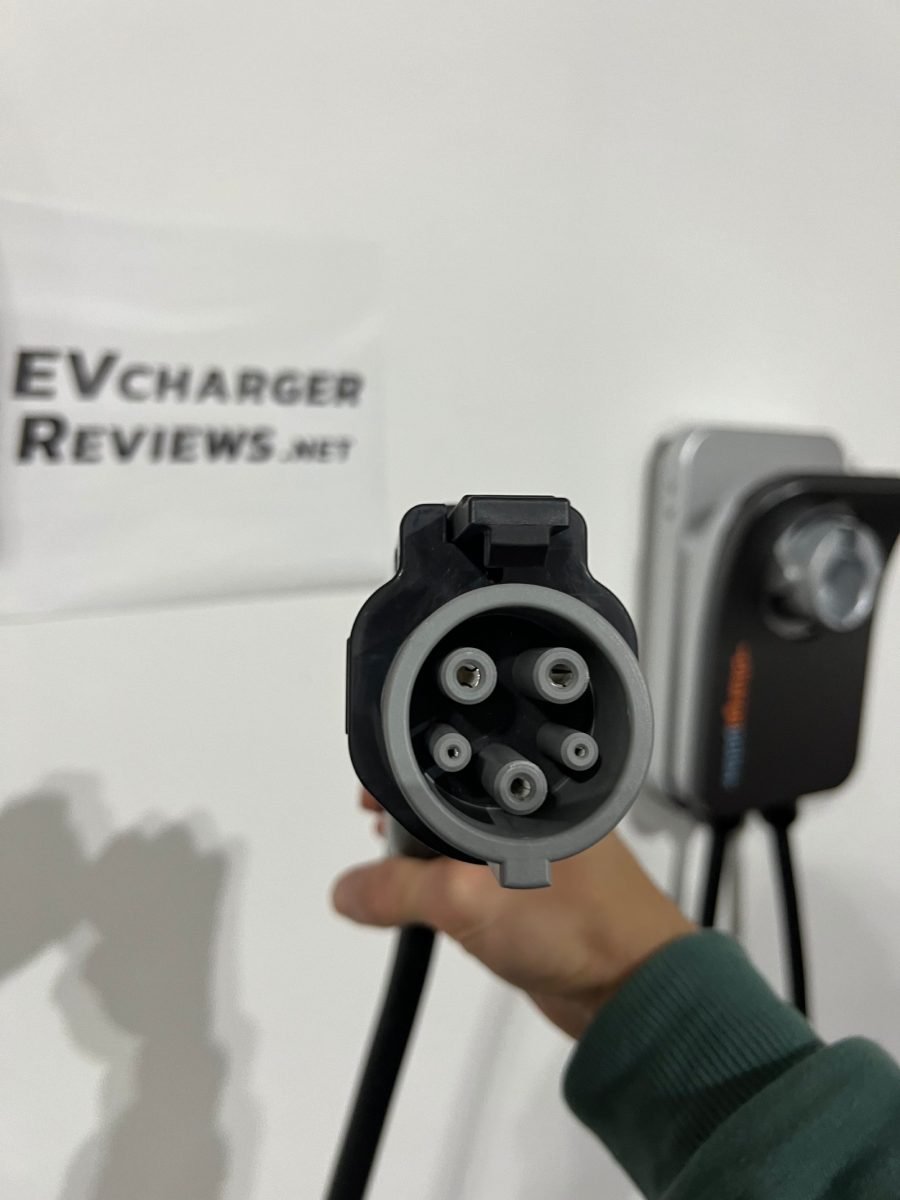
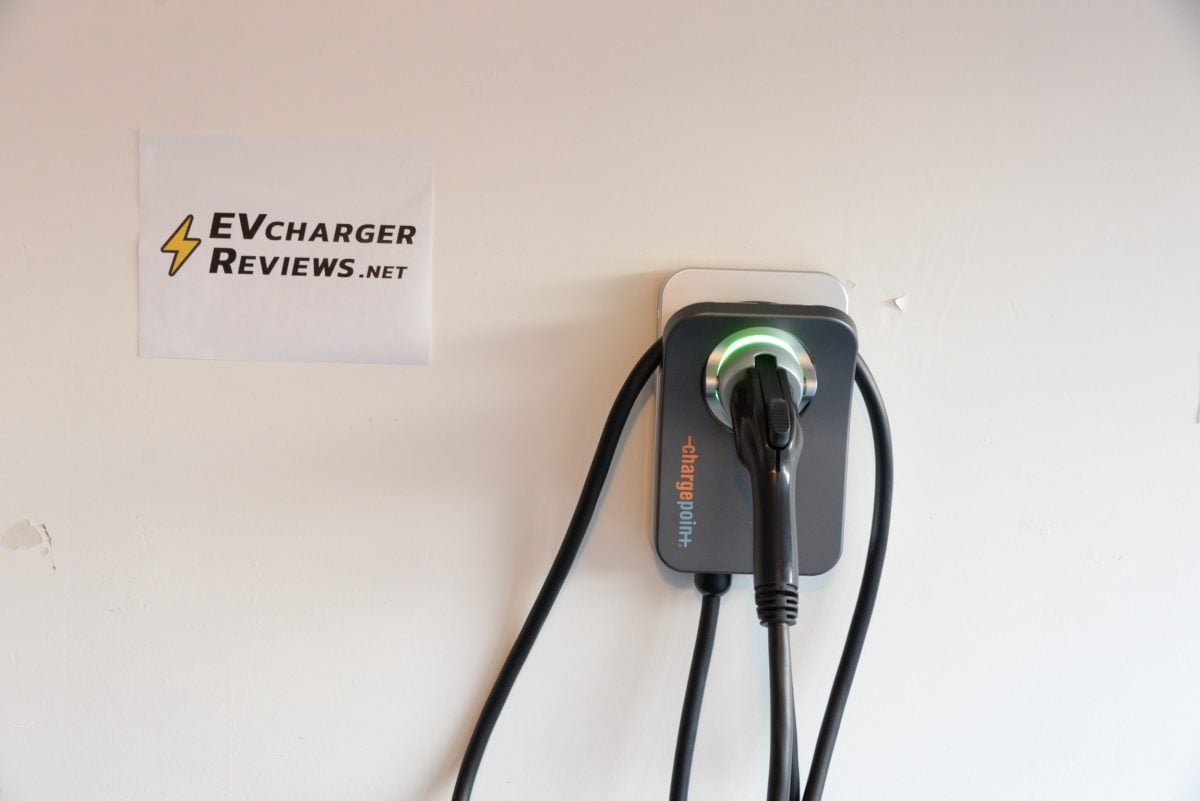
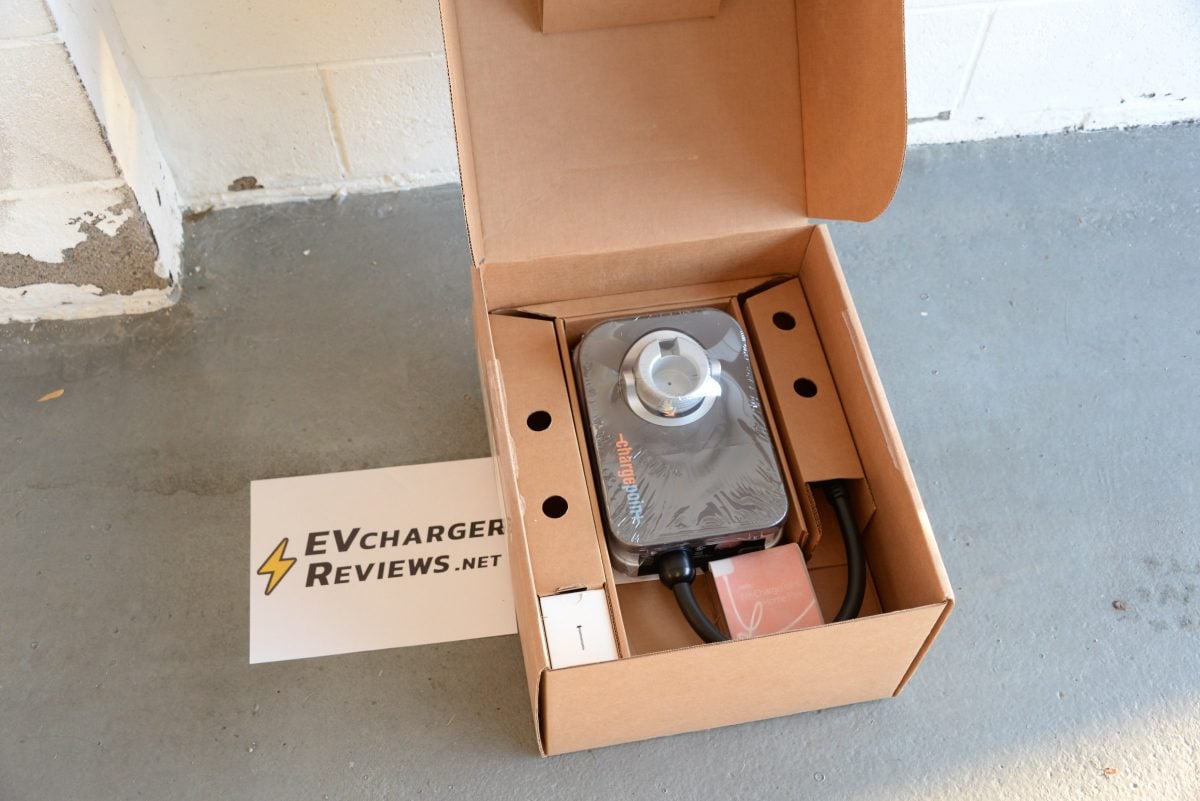
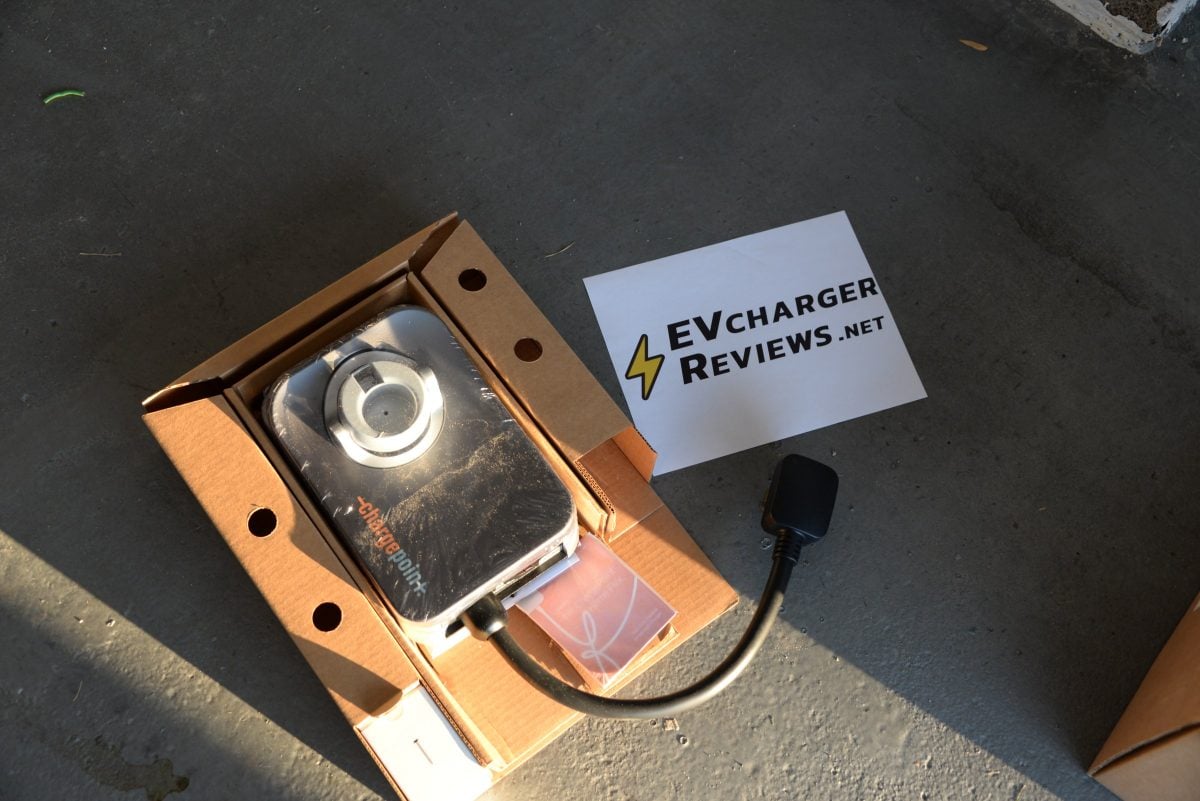
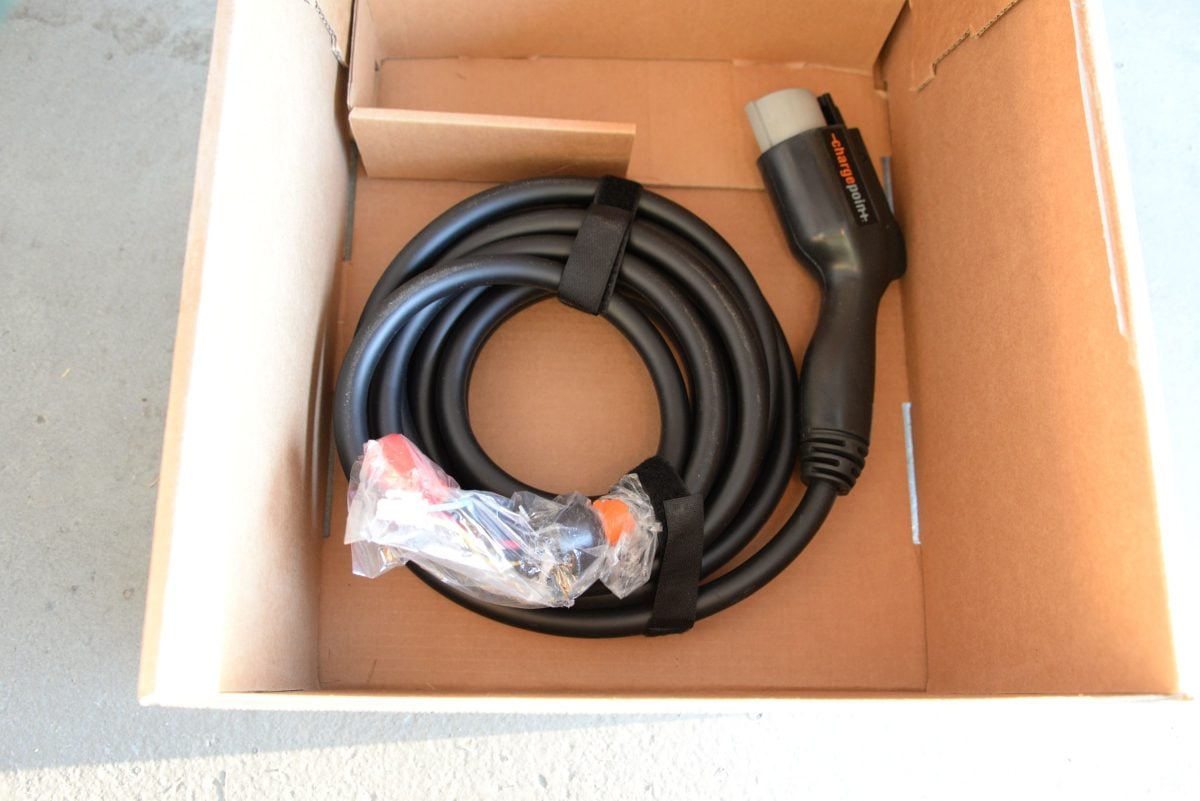
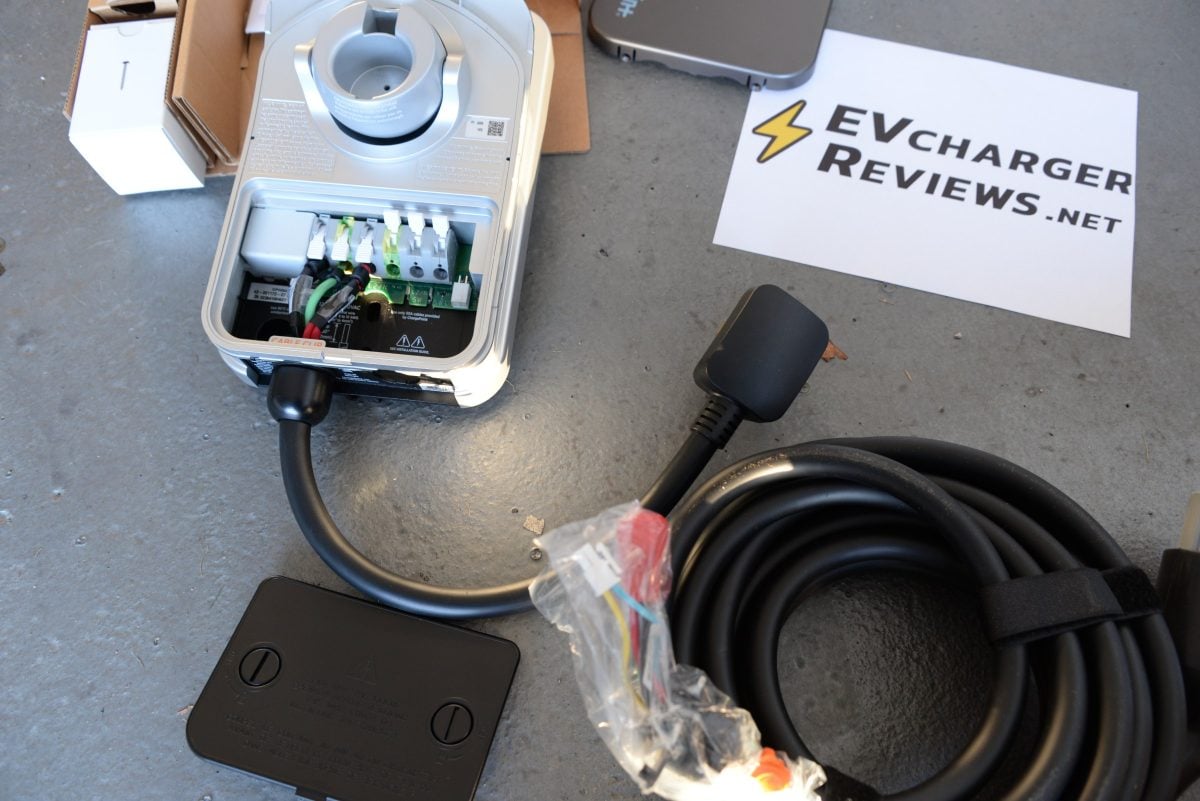
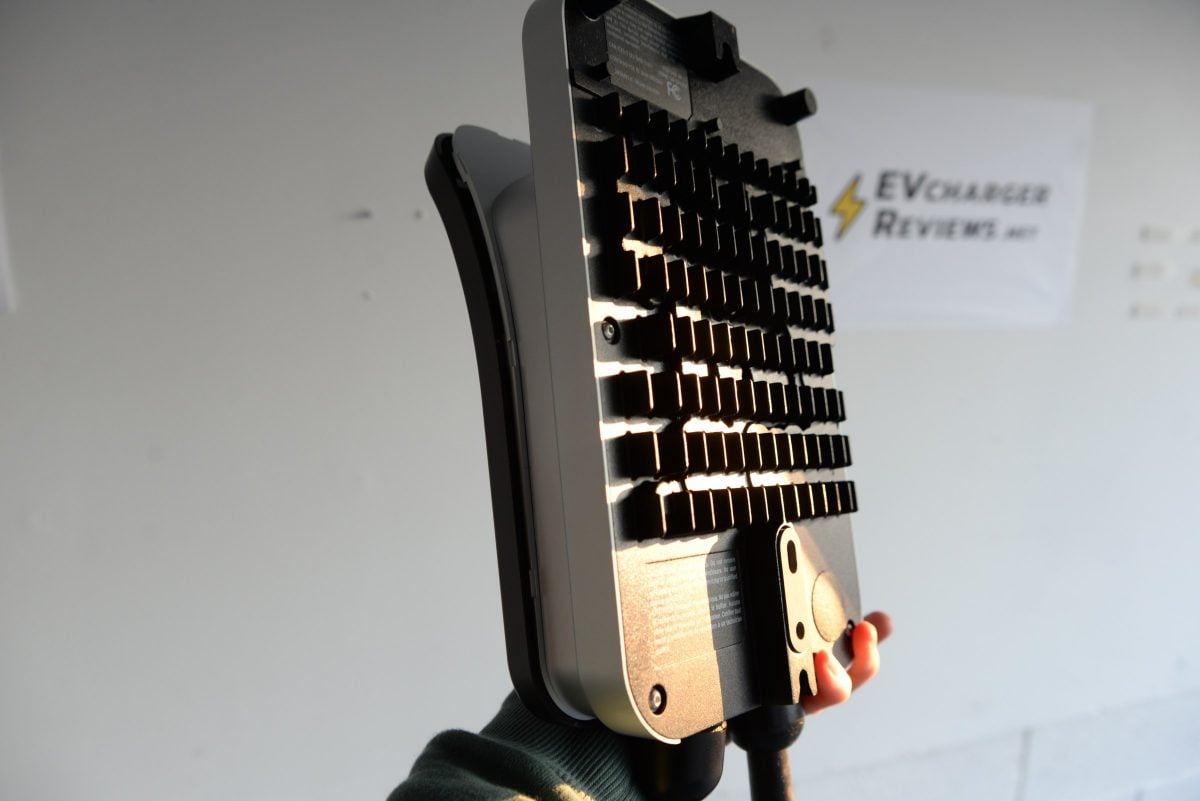
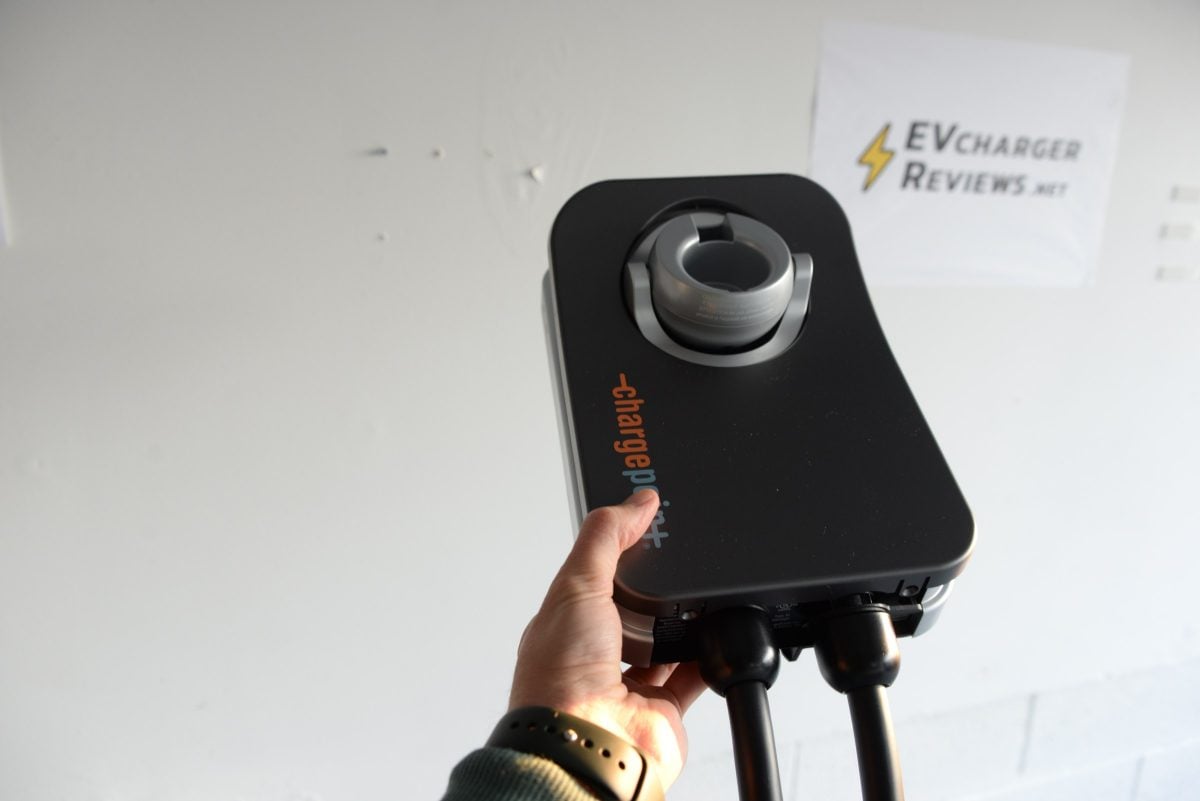
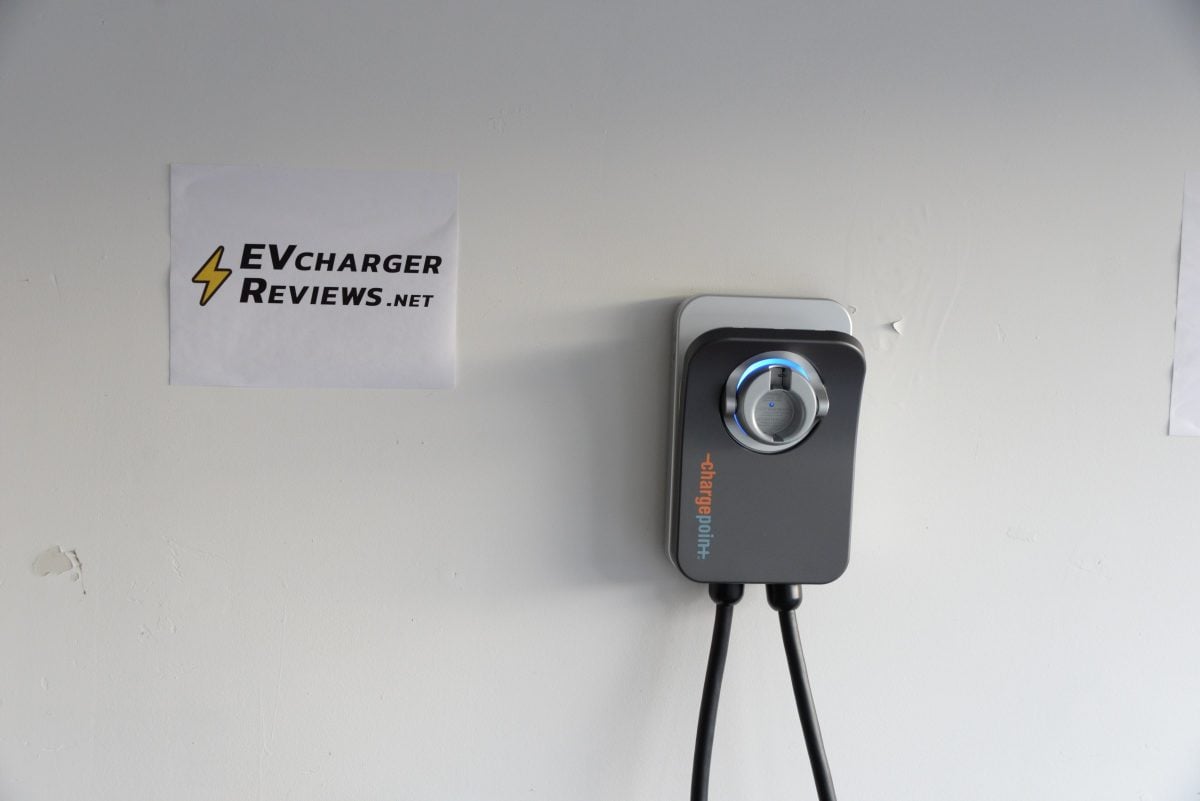
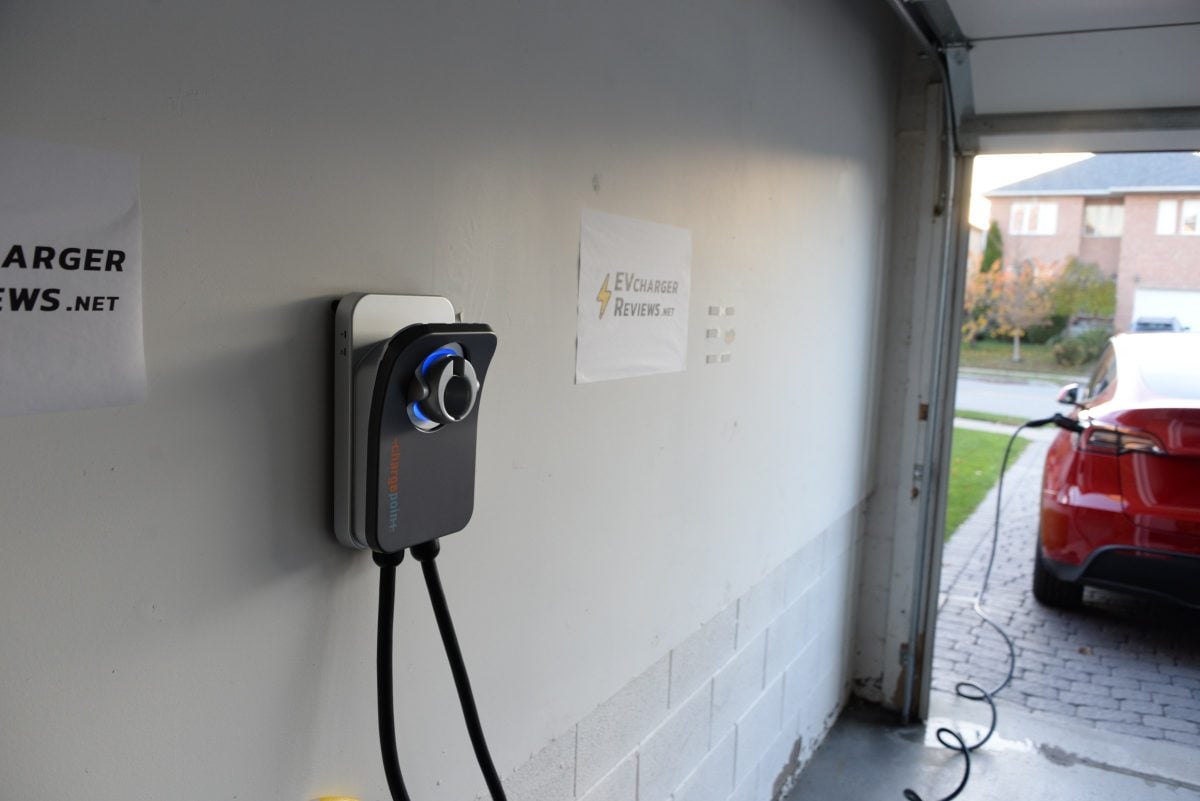
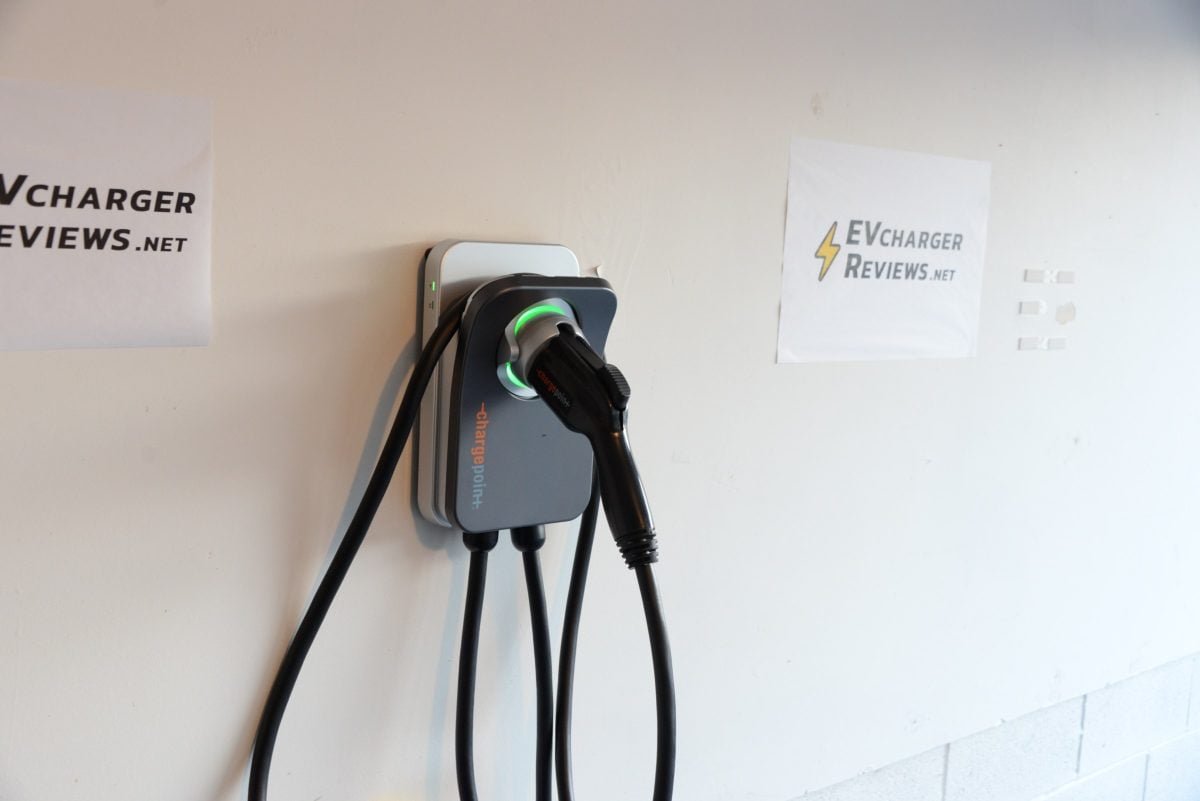
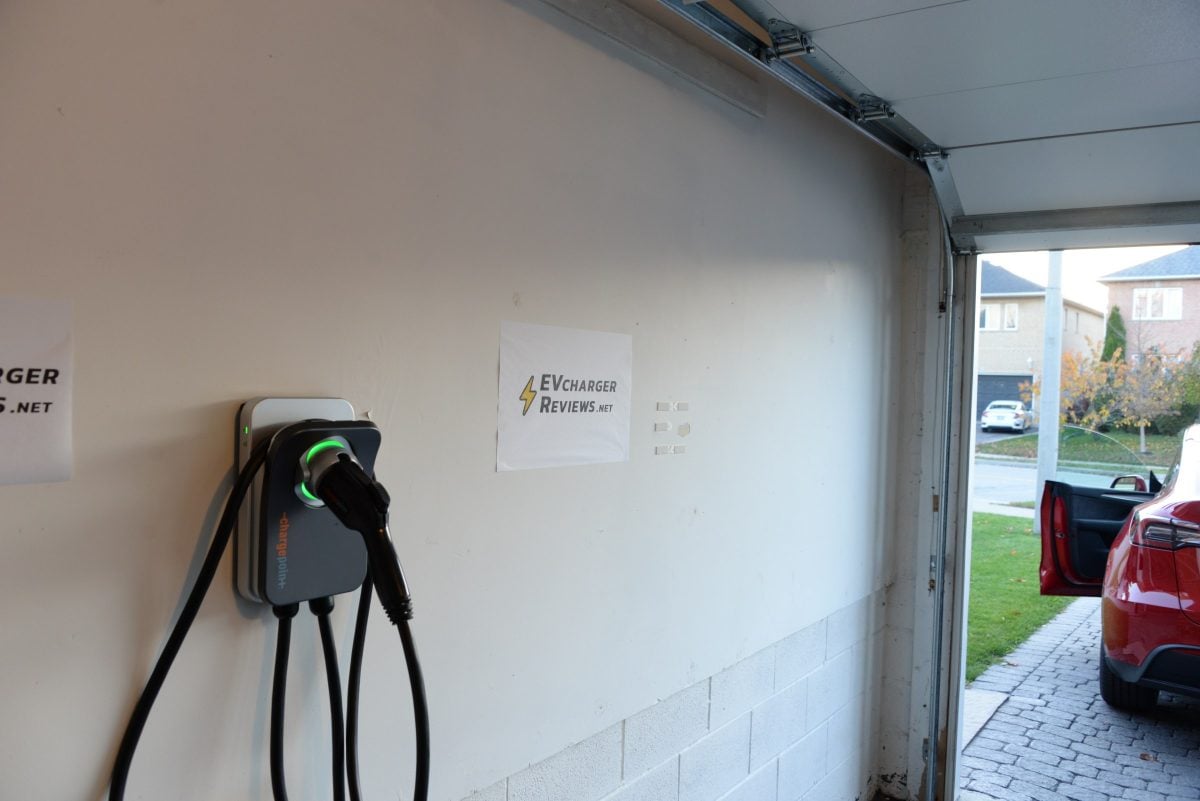
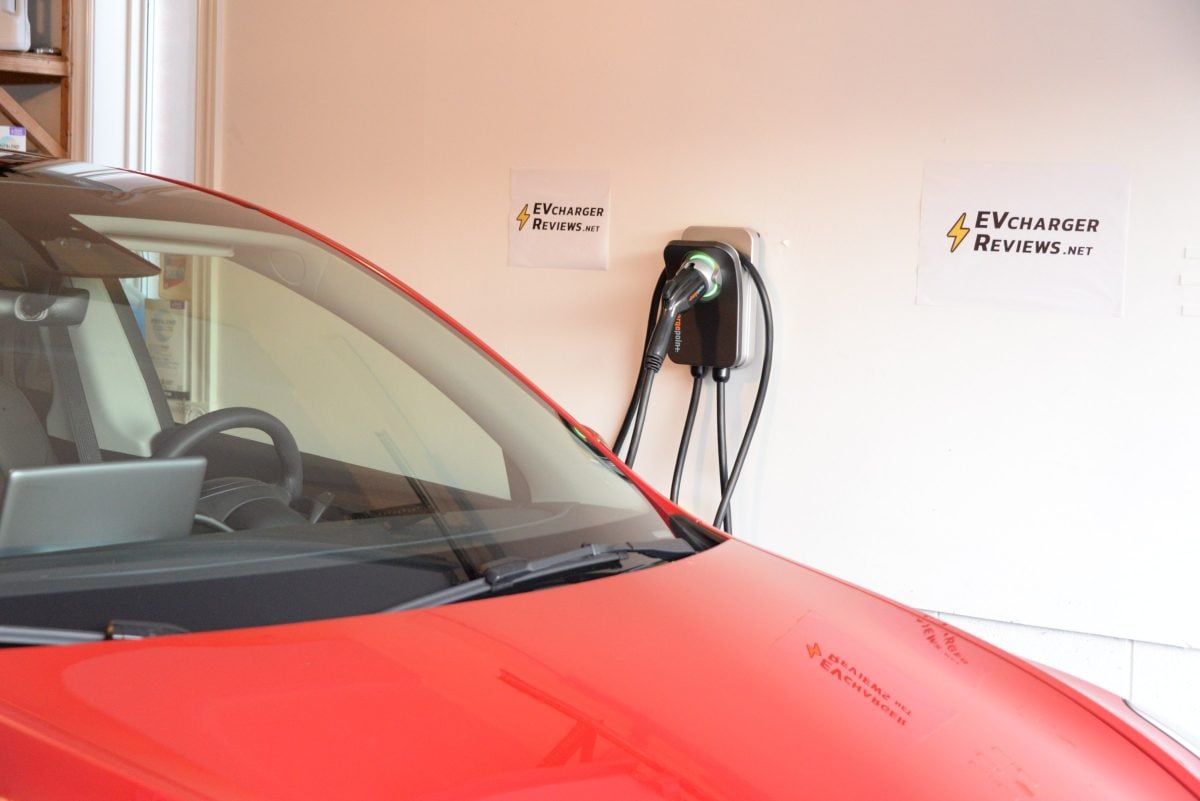
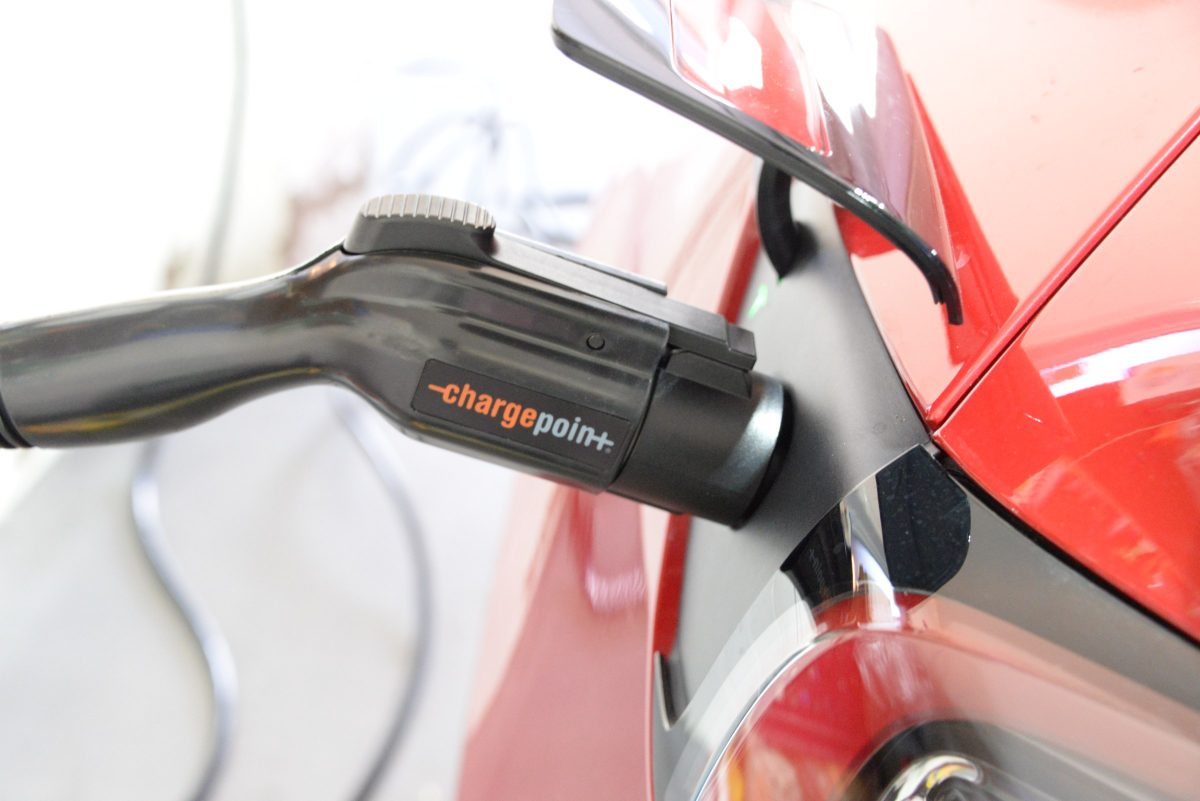
EVchargerReviews.net EVSE Review Methodology
We get the product into our facility, unbox it, inspect it, and install it just like the end user. We have a two-EV car garage with many electric miles accumulating weekly. We take EVSEs through a suite of tests, from short charging sessions, to long overnight charging sessions. We look at whether the claimed features work as expected. We check performance under challenging conditions; does the cord hold up to cold weather? Does the charging station throttle down amps due to heat and thermals? Does the Wi-Fi or Bluetooth drop the connection? Software bugs and glitches will surface during longer-term testing rather than a one-day trial. Measurements are taken on cord thickness and performance, and a thermal camera is used to look for surface hot spots after a 50 kWh stress test.
After living with the charging station product for at least two weeks, we are able to determine how the product compares to rivals, and if it deserves to be recommended to our readers.
Disclosure: Independent review by Michael Kim from EVchargerReviews.net. Our review unit was purchased from Amazon by us. We participate in affiliate programs, and we may earn income when you use our links. We hope you think that is fair, based on the amount of work that goes into our reviews.
Considering buying a Tesla? Use our referral link to get $1,000 off, and help support our content.
